Two of the folks I was fortunate enough to meet during my trips to Bonaire are Jack and Jane Hinz. Jack is an old friend of Paul Adler’s; with Paul, he was one of the first people to dive the Chester Poling. Today, Jack was nice enough to take me out for a couple of dives on his boat. He and I dove, while Jane stayed aboard and watched over the boat.
First Dive: The Chester Poling
When he saw I had the camera with me, he immediately offered to make the Chester Poling our first dive. The Poling is the stern half of an oil tanker that went down in 1977. During the 1978 blizzard, it was actually moved about 100 yards further offshore. It sits in about 85 feet of water, at the deck, getting down to about 100 feet at the sea bottom by the midship break.
Neither of us had been to the Poling in a while. My last trip had been in September of 2011; Jack said he hadn’t been back for a couple of years either. He’d been there shortly after it went down, of course, and he’s seen it change a lot over the course of the years. He remarked that when he first dove it, all the bulkheads were intact; now, he said, “the only thing holding the deck up in spots is water.”
He was a little concerned when he made some sonar passes before mooring—the ship didn’t seem as distinct from the sea floor as it once was.Still, it was there, and we would soon see what kind of condition it was in.
It turned out to still be in pretty good condition. It’s still pretty intact, and it’s very much an artificial reef—it’s swarming with little fish, and overgrown with all sorts of marine life. I think, in hindsight, that the reason it appeared less intact on sonar was because it’s been silted in. At the stern, there’s only about five feet now between the railing and the bottom.
We came down the mooring line to the stern rail, and started forward toward the break. Unfortunately, I allowed myself to get distracted by the camera, and lost sight of Jack. I started looking for him, without much success. I was greatly relieved when he popped up out of a hatch, herding a lumpy looking red fish across the deck.
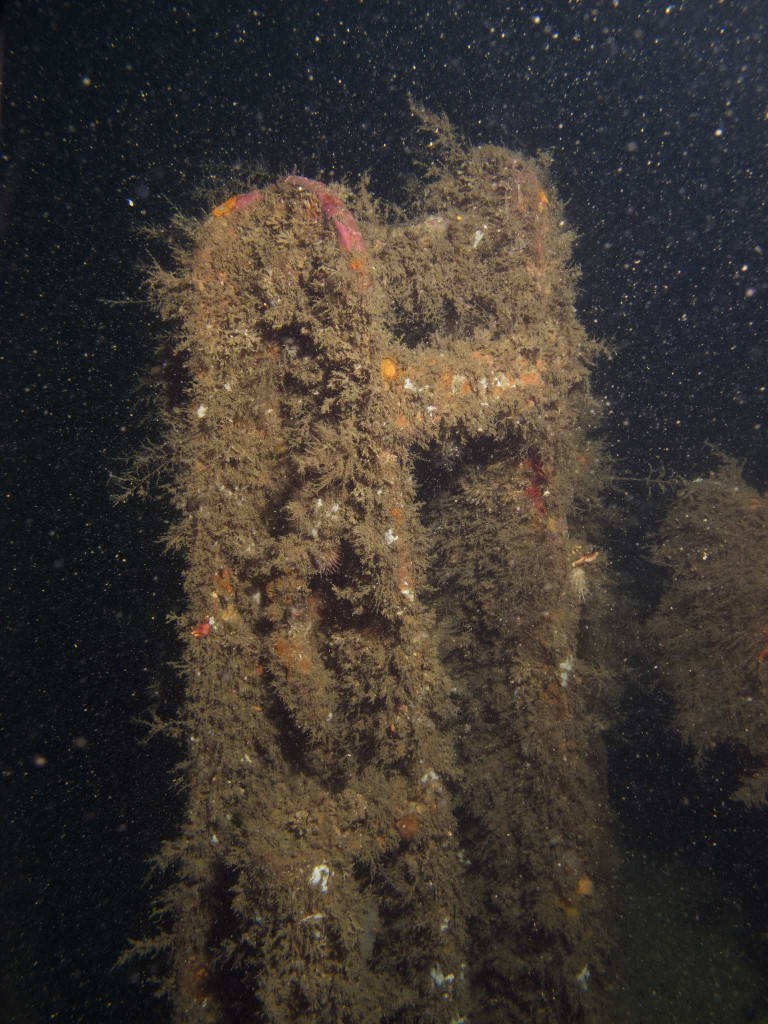
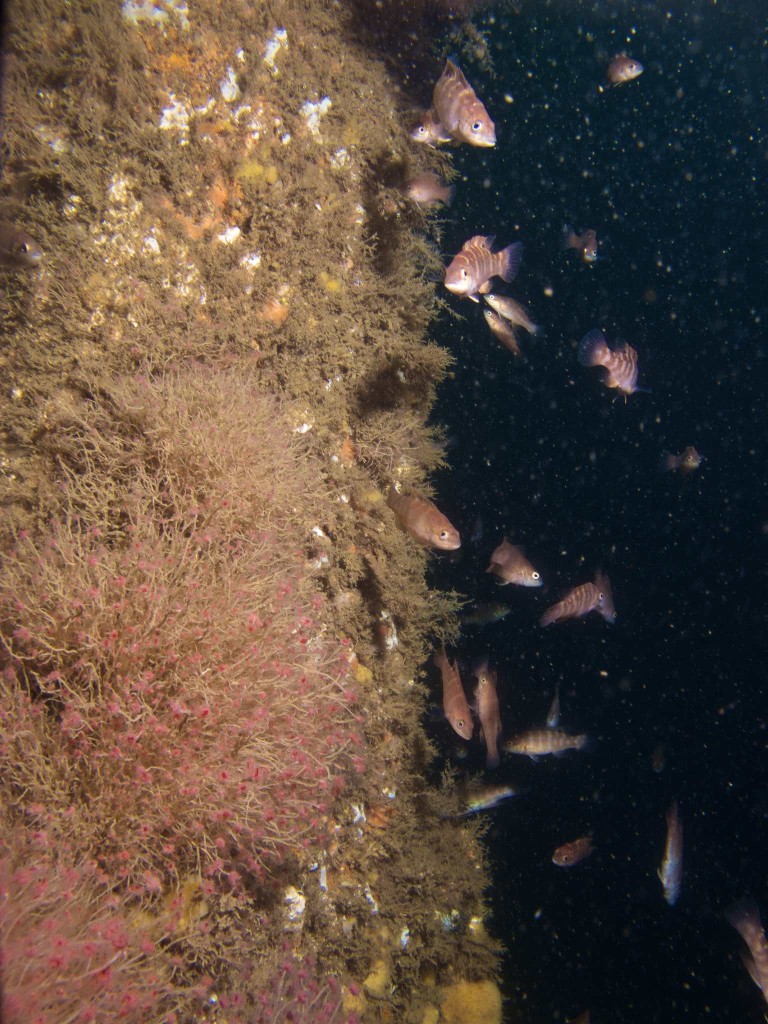
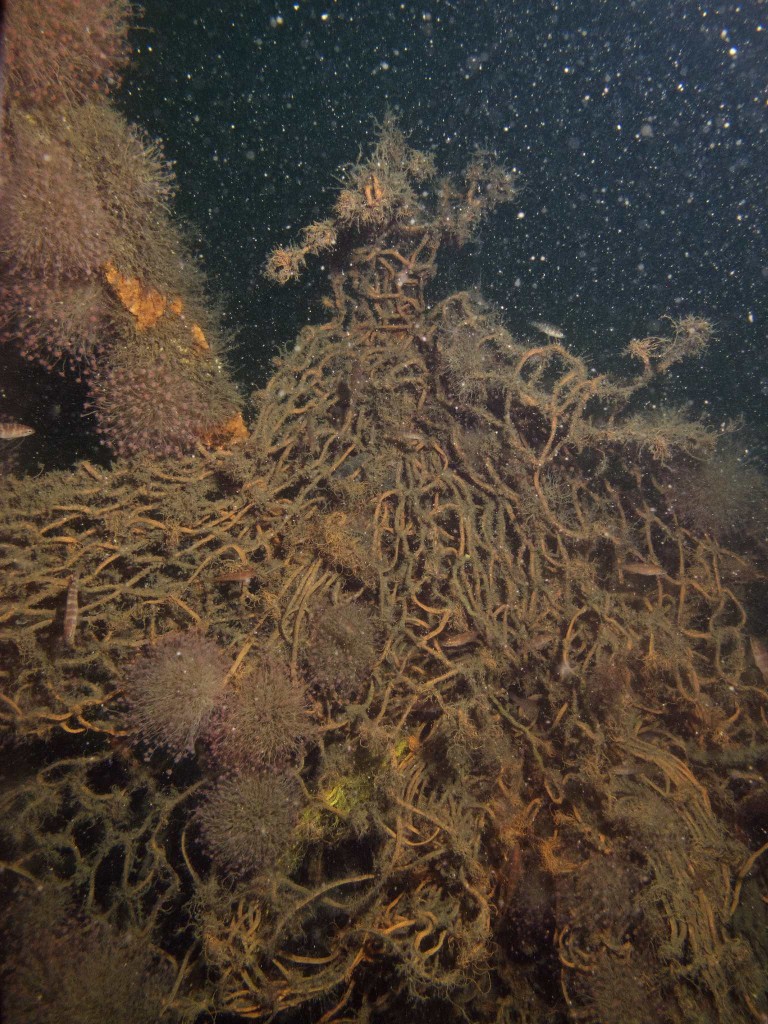
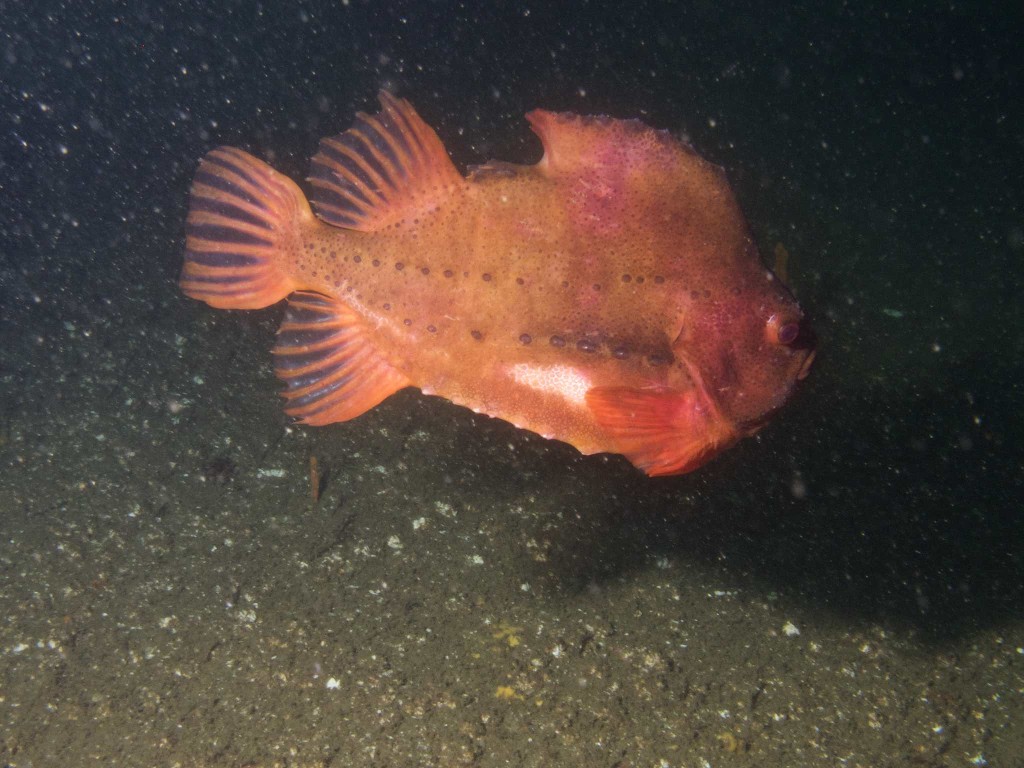
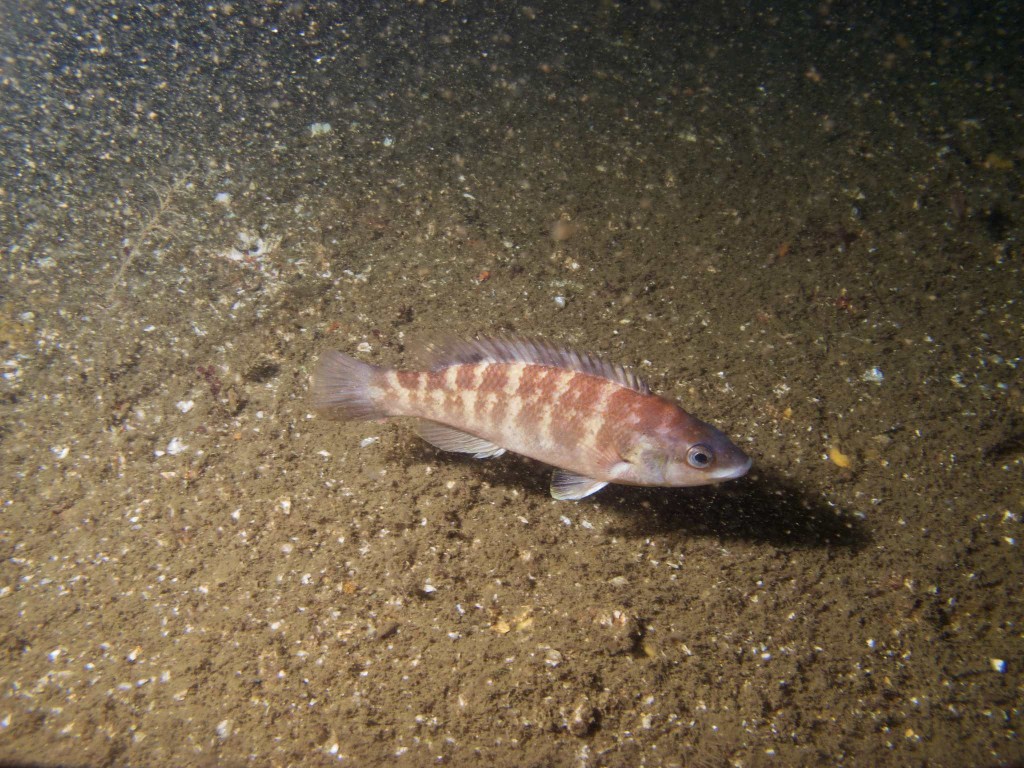
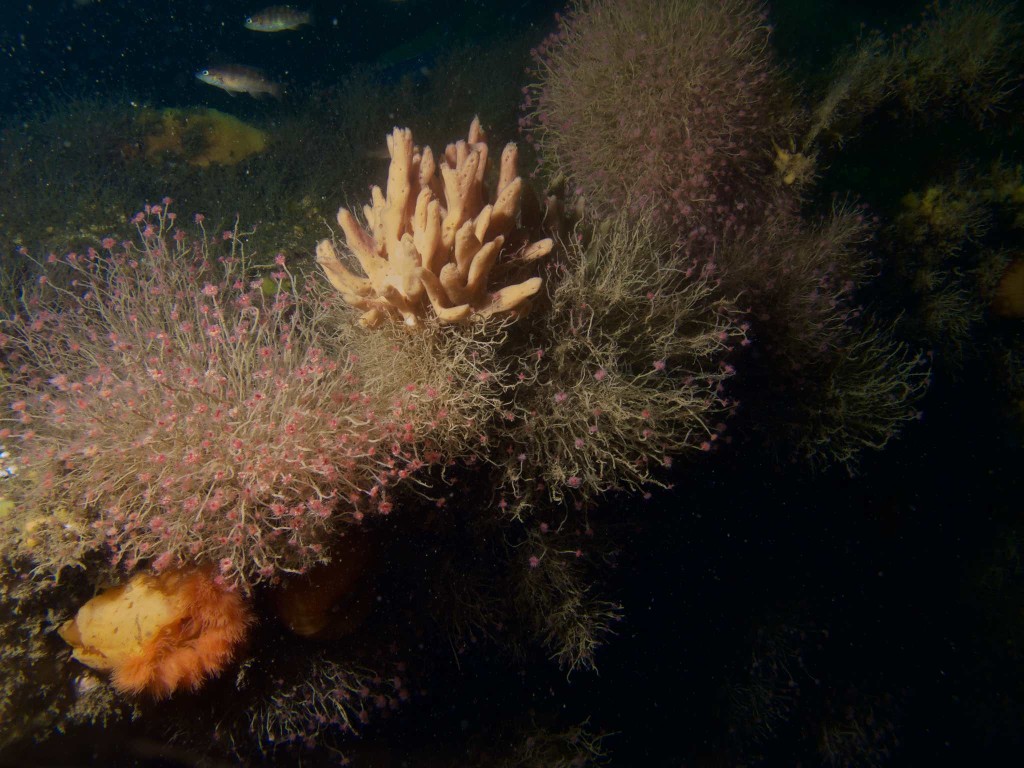
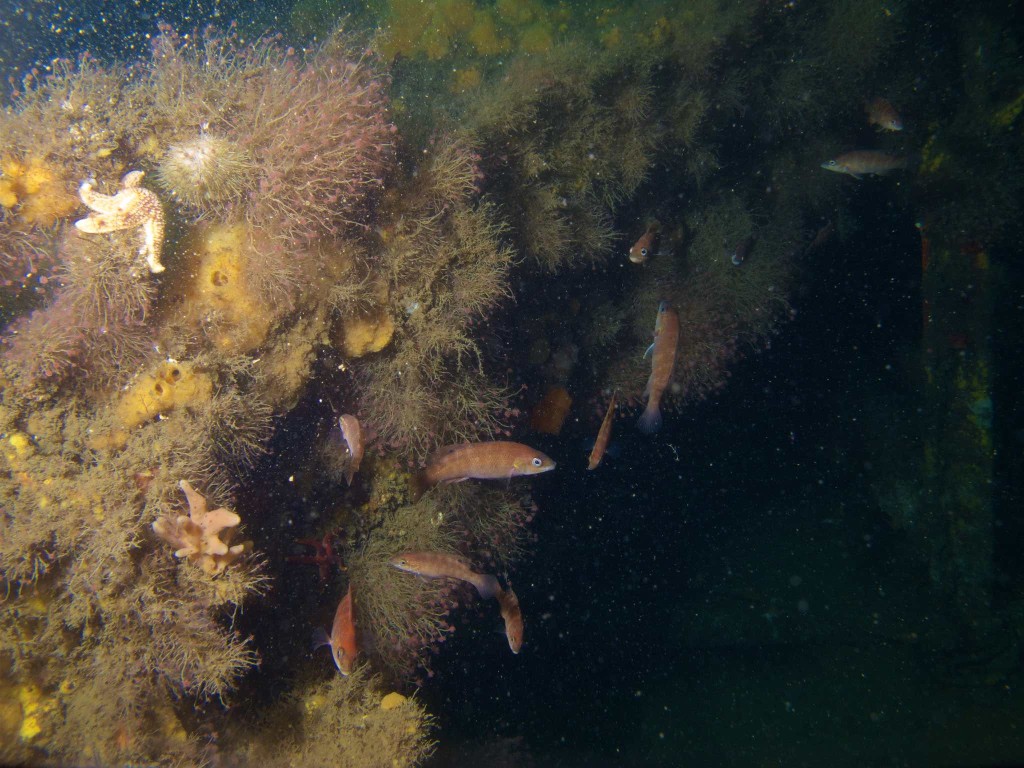

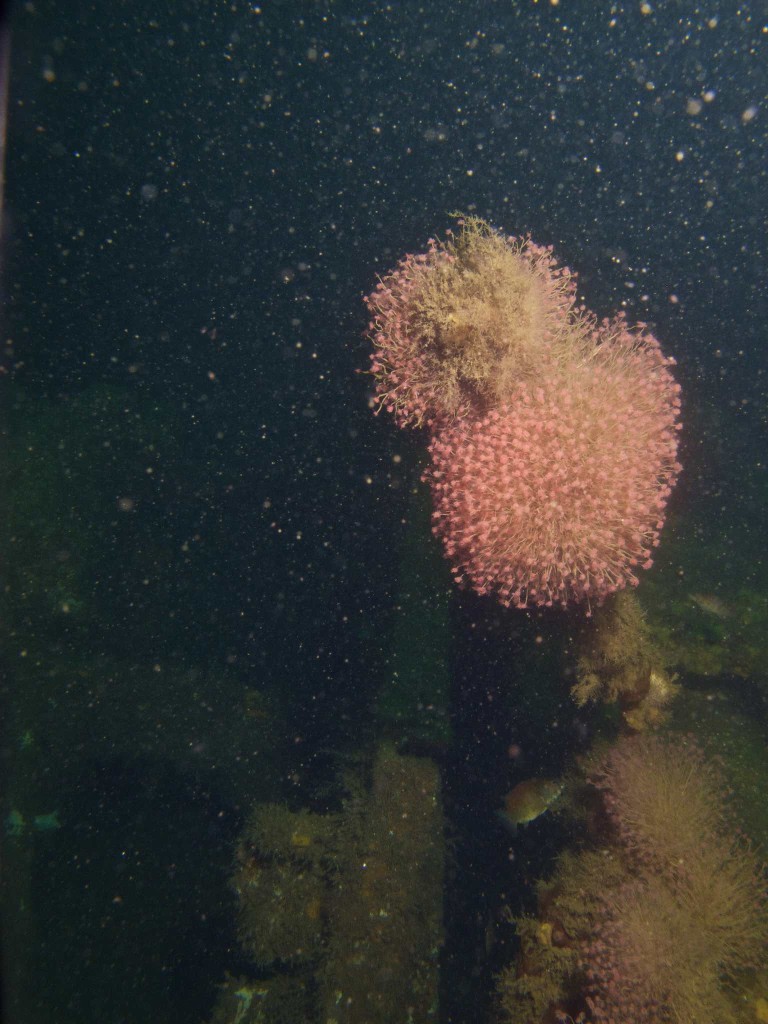
Together, we proceeded forward to the break. You could look in, and see the remains of machinery there. There was also a brand new lobster trap just inside the wreck, its line wrapped around the wreckage. I was tempted to free it, but remembered that, gee,lobstermen don’t like divers around their traps, so I let it be.
At that point, it was time to head back, so we went back to the stern rail, and back up the line to the surface.
Second Dive: Kettle Island
For our second dive, Jack decided to dive Kettle Island, a small island off Magnolia Rocks. We anchored just off the island, in about 30 feet of water. I really liked this site. It reminded me a lot of the left side of Folly Cove — lots of crevasses, lots of sea urchins, starfish and even some anemones. I also saw some pollock there….not quite a school, more like an after school tutoring session. The bottom seemed very sculptural to me. At one point, the wall was like series of stone blocks.
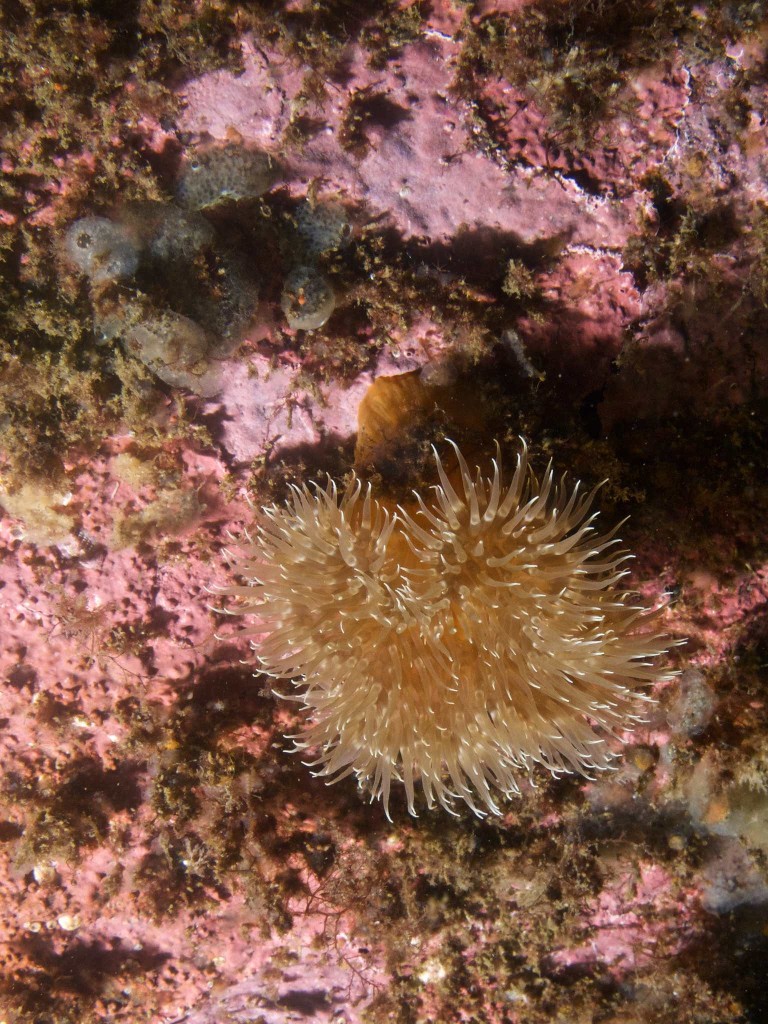

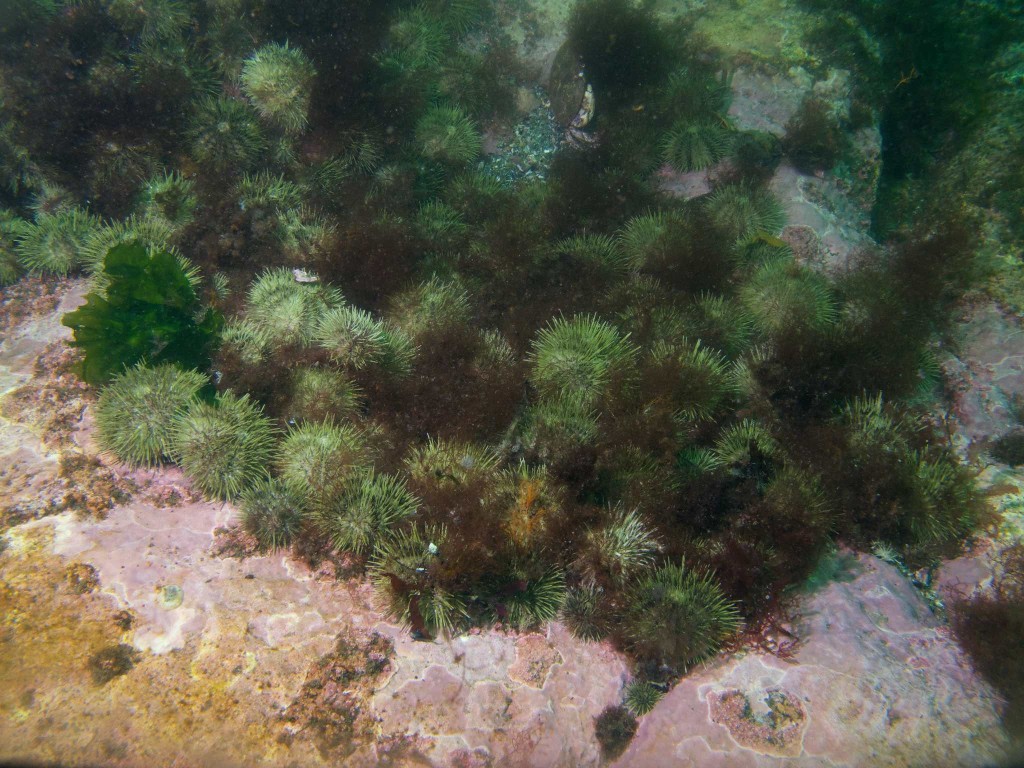
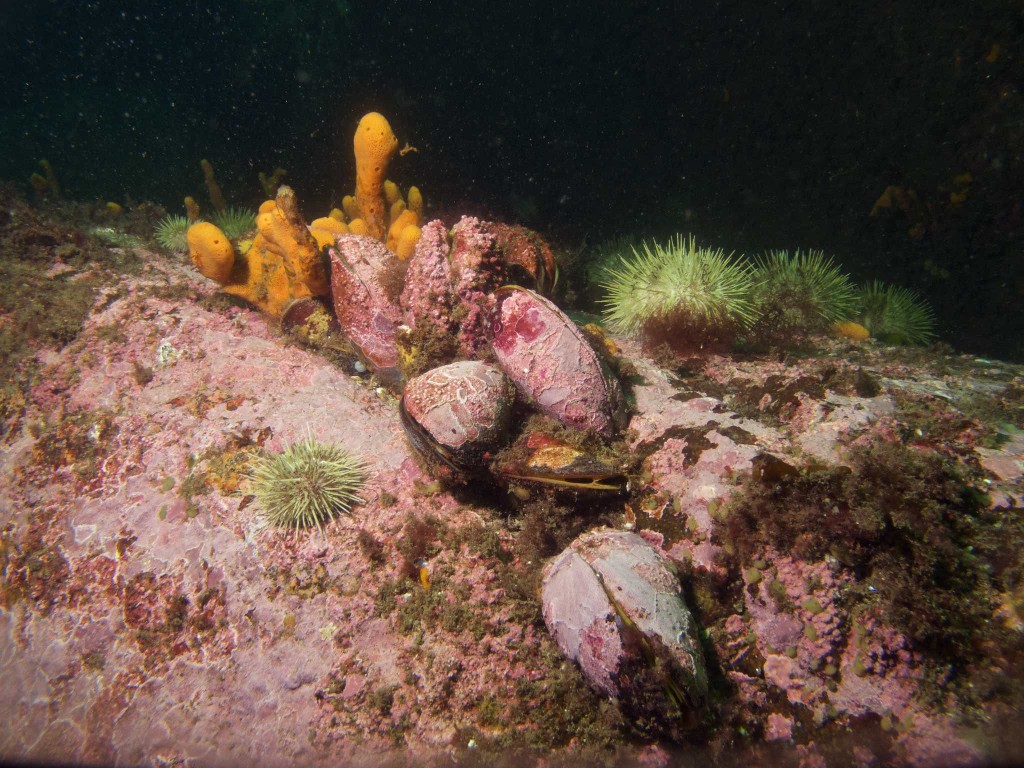
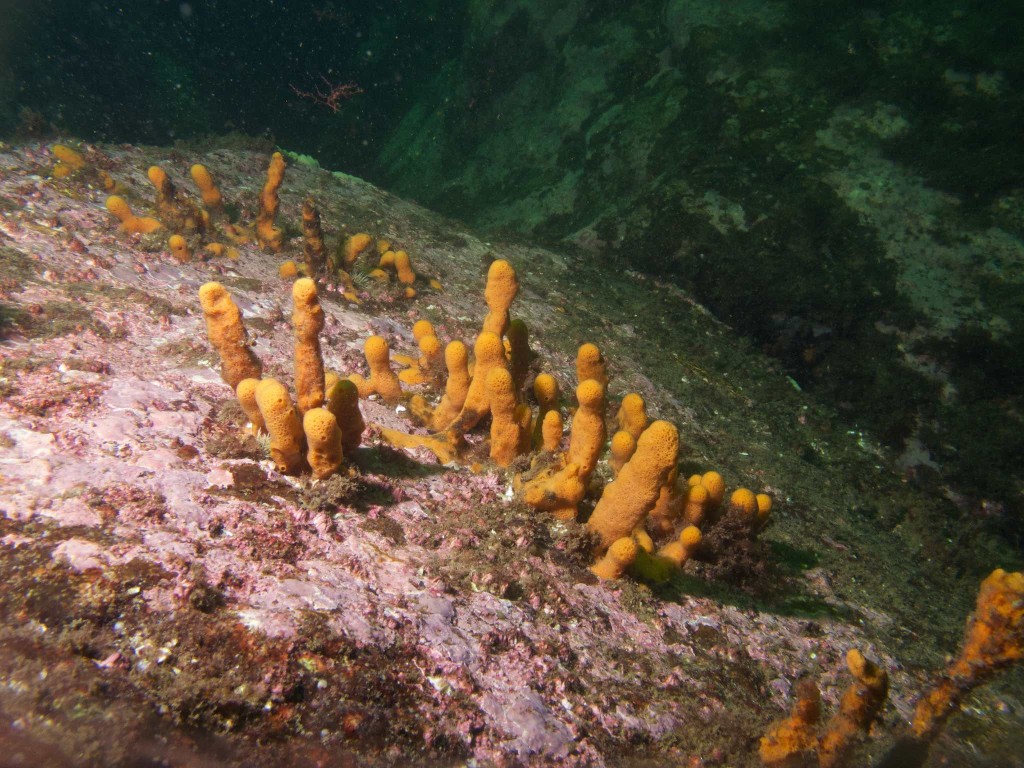
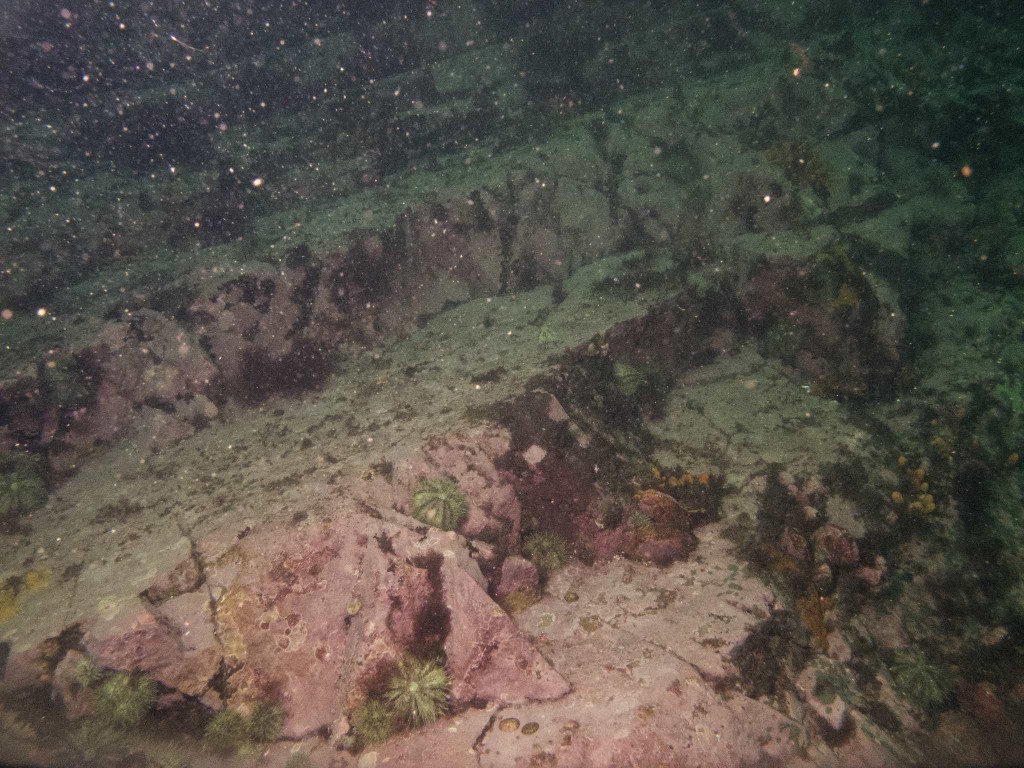
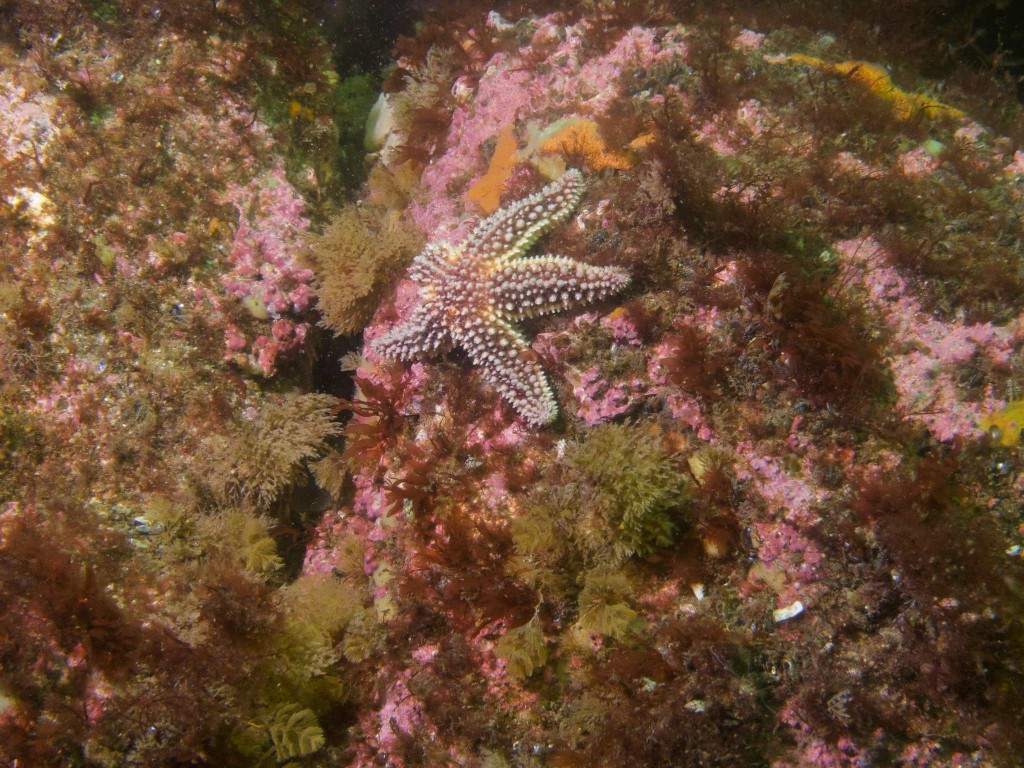
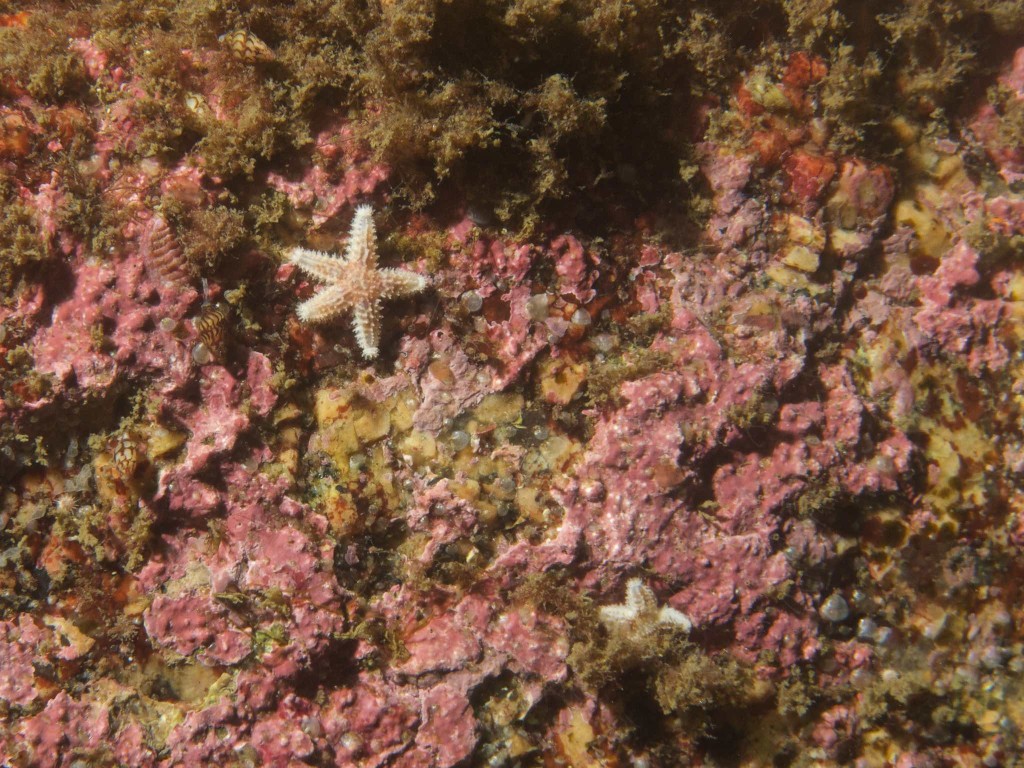

I’d like to thank Jack and Jane once again for having me along and showing my such a nice time. The weather was perfect and the dives were great.
